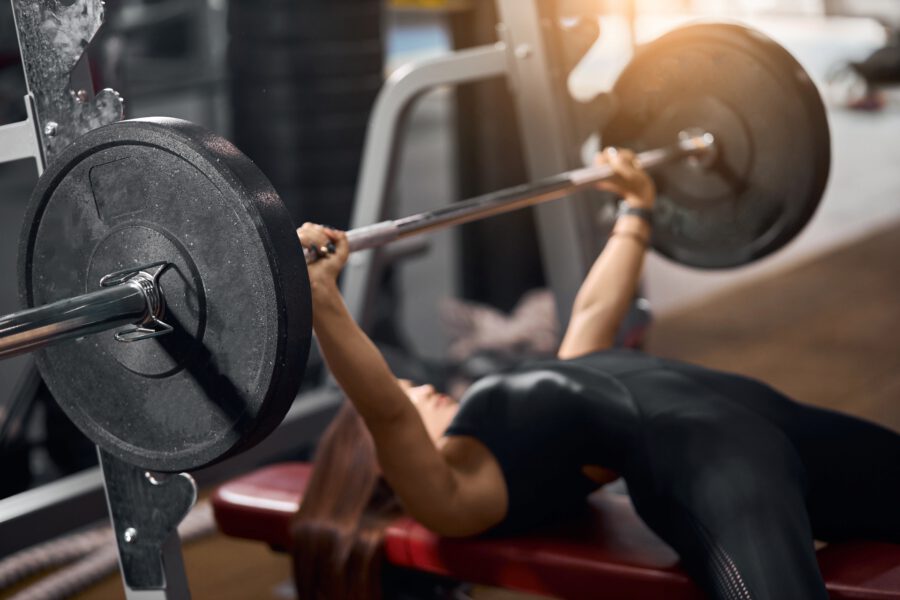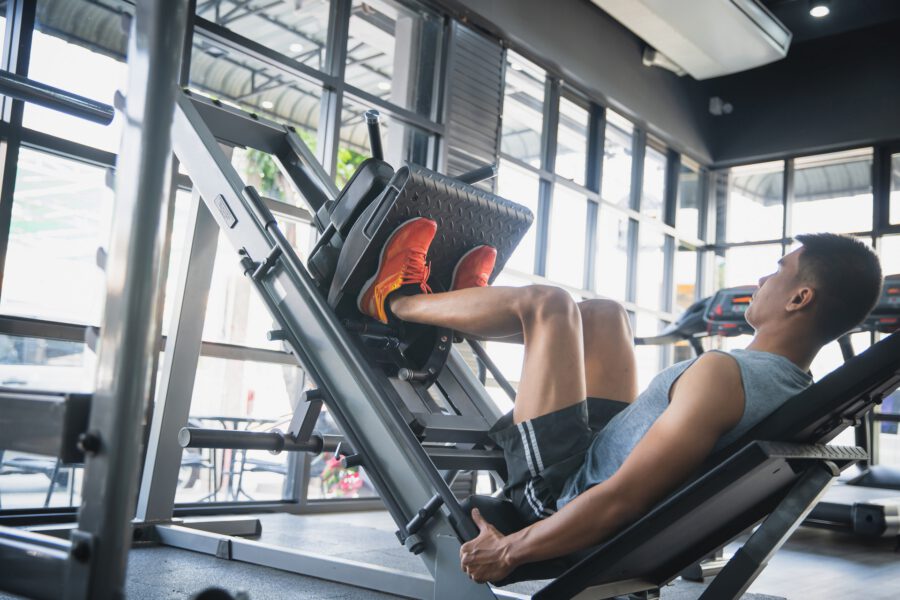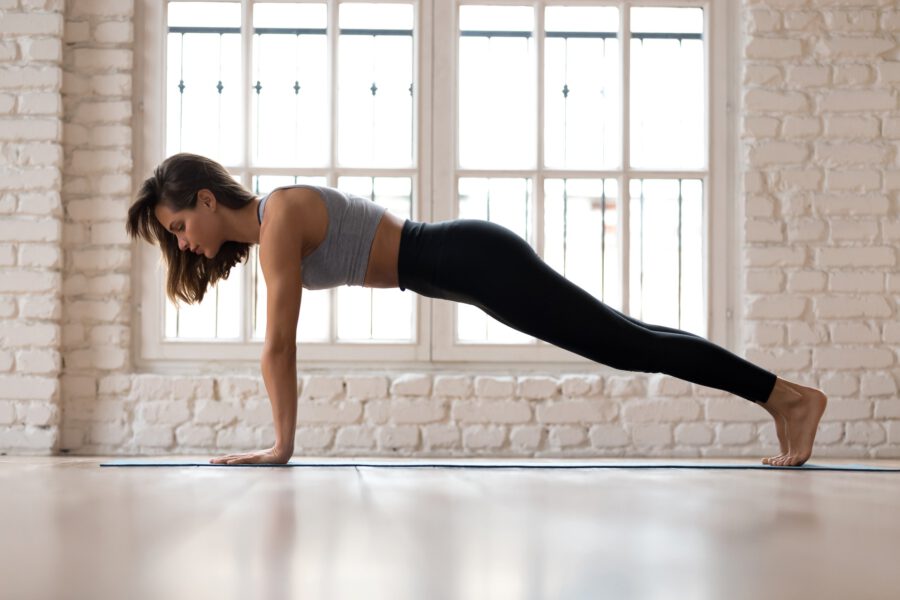How to Test Your Muscular Strength & Endurance
In order to make real progress in your fitness journey, it is essential that you get a complete picture of your starting fitness level. One area that is often overlooked is muscular strength and muscular endurance. In this article, we focus on this vital aspect of your overall fitness.
Muscular strength is the maximum amount of force that a muscle can generate. We can measure both our static and dynamic strength. Static strength tests how much force a person can exert against an object without moving. In dynamic strength testing, a person moves an external load. We call this repetition maximum testing (RM). It is possible to predict one rep maximum (1RM) from multiple rep testing.
Muscular endurance is the ability of a muscle to perform repeated contractions against resistance over a period of time. Muscular endurance is typical of low-level muscular contractions that need to be maintained for a long period of time, such as when stabilizing the body. In a weight training setting, it involves doing high repetitions at low intensity.
The following muscular assessments are a great way to assess both your upper and lower body strength. They will need to be done in a gym.
Be sure to fully warm up before undertaking the following strength assessments. Perform dynamic stretching moves where you perform such exercises as full arm and leg swings as well as moving your arms horizontally in and out across your torso.
Lie on a flat bench with a racked barbell. Then place your hands on the bar slightly wider than shoulder width. After lifting the bar off the rack, lower it to chest level and then push it back up to the starting position. Keep the low back pressed into the pad of the bench.
In terms of the weight on the bar, start with your bodyweight in pounds and then multiply it by the figure in the chart below that corresponds to your age-group in the fair or average column. This will give you your starting weight. Try the exercise and then either add or subtract weight as needed.
Your goal is to find the maximum weight that you can perform for a single repetition.
Note: You should have a person standing behind the bench to spot you when you are doing a one rep max (1RM) bench press assessment.
| Age | <20 | 20-29 | 30-39 | 40-49 | 50-59 | 60-69 |
| Superior | 1.76 | 1.63 | 1.35 | 1.20 | 1.05 | 0.94 |
| Excellent | 1.34 | 1.32 | 1.12 | 1.00 | 0.90 | 0.82 |
| Good | 1.19 | 1.14 | 0.98 | 0.88 | 0.79 | 0.72 |
| Fair | 1.06 | 0.99 | 0.88 | 0.80 | 0.71 | 0.66 |
| Poor | 0.89 | 0.88 | 0.78 | 0.72 | 0.63 | 0.57 |
| Very Poor | 0.76 | 0.72 | 0.65 | 0.59 | 0.53 | 0.49 |
To understand how to use this chart, let’s look at an example:
A 58-year-old man weighs 170 pounds. To estimate a weight to begin testing his 1RM, multiply 170 (his weight) by 0.71 (minimum value for fair in his age group) to arrive at 121. The number 121represents the amount of weight in pounds that he should be able to bench press for a 1RM, taking into consideration his age and assuming that he is in fair condition.
| Age | <20 | 20-29 | 30-39 | 40-49 | 50-59 | 60-69 |
| Superior | 0.88 | 1.01 | 0.82 | 0.77 | 0.68 | 0.72 |
| Excellent | 0.77 | 0.80 | 0.70 | 0.62 | 0.55 | 0.54 |
| Good | 0.65 | 0.70 | 0.60 | 0.54 | 0.48 | 0.47 |
| Fair | 0.58 | 0.59 | 0.53 | 0.50 | 0.44 | 0.43 |
| Poor | 0.53 | 0.51 | 0.47 | 0.43 | 0.39 | 0.38 |
| Very Poor | 0.41 | 0.44 | 0.39 | 0.35 | 0.31 | 0.26 |
Here’s an example for women: A 27-year-old woman weighs 127 pounds. To estimate a weight to begin testing her 1RM, multiply 127 (her weight) by 0.59 (minimum value for fair in her age group) to arrive at 75. The number 75 represents the amount of weight in pounds that she should be able to bench press for a 1RM, taking into consideration her age and assuming that she is in fair condition.
To test your lower body strength level, you should perform the leg press exercise. Your gym will have at least one leg press machine. You sit in the machine and push a foot plate which is connected to a weight stack. When you sit in the machine your knees will be bent. Your goal is to push with your legs until they are straight.
Use the following chart to assess your lower body strength level.
| Rating | Weight |
| Poor | Less than bodyweight |
| Below Average | 1.5 x bodyweight |
| Average | 2 x bodyweight |
| Above Average | 2.5 x bodyweight |
| Very Good | 3 x bodyweight |
| Excellent | 4 x bodyweight |
| Rating | Weight |
| Poor | Less than bodyweight |
| Below Average | 1.5 x bodyweight |
| Average | 2 x bodyweight |
| Above Average | 2.5 x bodyweight |
| Very Good | 3 x bodyweight |
| Excellent | 3.5 x bodyweight |
Sit and Reach This stretch measures the flexibility of the lower back and hamstrings. Sit on the floor with your legs out straight and your shoes off. Place your feet flat against a box with both knees flat against the floor. Now lean forward slowly as far as possible and hold the greatest possible stretch for two seconds. Make sure there are no jerky movements and that the fingertips remain level and the legs flat. Have a friend measure the distance of stretch along the box.
The following chart provides the norms for the sit and reach test:
| Result | Adult Male | Adult Female |
| Excellent | >34 cm | >37cm |
| Above Average | 28-33 cm | 33-36 cm |
| Average | 23-27 cm | 29-32 cm |
| Below Average | 16-22 cm | 23-28 cm |
Here‘s a workout you should try:
To measure your upper body muscular endurance, you should do the push up test. Men should use the standard “military style” push-up position with only the hands and the toes touching the floor. Women have the option of using the bent-knee position, if needed. With knees on the floor, hands on either side of the chest and back straight, do as many push-ups as possible with good form until exhaustion. Count the total number of push-ups performed.
Check your results against the following chart.
| Age | <20 | 20-29 | 30-39 | 40-49 | 50-59 | 60-69 |
| Superior | >39 | >36 | >30 | >22 | >21 | >18 |
| Excellent | 29-38 | 29-35 | 22-29 | 17-21 | 13-20 | 11-17 |
| Good | 23-28 | 22-28 | 17-21 | 13-16 | 10-12 | 8-10 |
| Fair | 18-22 | 17-21 | 12-16 | 10-12 | 7-9 | 5-7 |
| Poor | <17 | <16 | <11 | <9 | <6 | <4 |
| Age | <20 | 20-29 | 30-39 | 40-49 | 50-59 | 60-69 |
| Superior | >33 | >30 | >27 | >24 | >21 | >17 |
| Excellent | 25-32 | 21-29 | 20-26 | 15-23 | 11-20 | 12-16 |
| Good | 18-24 | 15-20 | 13-19 | 11-14 | 7-10 | 5-11 |
| Fair | 12-17 | 10-14 | 8-12 | 5-10 | 2-6 | 2-4 |
| Poor | <11 | <9 | <7 | <4 | <1 | <1 |
To assess your core endurance, you should perform the sit-up test. Lie on the floor with knees bent, feet flat, and hands resting on your thighs. Contract the abdominals by squeezing them and then raising high enough for your hands to touch the tops of your knees. Do not pull at the neck or head, and keep the lower back flat on the floor. Continue for one minute. If you have back problems, this test should be avoided.
Check your results against the following chart.
| Age | <20 | 20-29 | 30-39 | 40-49 | 50-59 | 60-69 |
| Superior | >61 | >54 | >50 | >46 | >42 | >38 |
| Excellent | 51-61 | 47-54 | 43-50 | 39-46 | 35-42 | 30-38 |
| Good | 47-50 | 42-46 | 39-42 | 34-38 | 28-34 | 22-29 |
| Fair | 41-46 | 38-41 | 35-38 | 29-33 | 24-27 | 19-21 |
| Poor | 36-40 | 33-37 | 30-34 | 24-28 | 19-23 | 15-18 |
| Very Poor | <36 | <33 | <30 | <24 | <19 | <15 |
| Age | <20 | 20-29 | 30-39 | 40-49 | 50-59 | 60-69 |
| Superior | >54 | >50 | >41 | >37 | >29 | >27 |
| Excellent | 46-54 | 44-50 | 35-41 | 29-37 | 24-29 | 17-27 |
| Good | 36-45 | 38-43 | 29-34 | 24-28 | 20-23 | 11-16 |
| Fair | 32-35 | 32-37 | 25-28 | 20-23 | 14-19 | 6-10 |
| Poor | 28-31 | 24-31 | 20-24 | 14-19 | 10-13 | 3-5 |
| Very Poor | <28 | <24 | <20 | <14 | <10 | <3 |
Having assessed your muscular strength, endurance, core endurance and flexibility you now have a great base level from which to build. It is now up to you to undertake a well-balanced, progressive resistance training program in order to make you stronger, more flexible and more muscular.


